Abstract
The means for distinguishing Escherichia from Aerobacter (Enterobacter) differ in laboratories and range from complete dependence on colonial reactions on typical gram-negative media to reliance on one or more of the classical indole, methyl red, Voges-Proskauer, citrate (IMViC) parameters. Three colonial types (one prejudged as Escherichia) of lactose-positive rods were catalogued on each of the most commonly used selective media, MacConkey Agar, Endo Agar, and E M B Agar. Each cultural type was presumptively diagnosed and then compared with the expected outcome of individual IMViC tests. The distribution of preliminary identifications was similar from growth patterns on MacConkey Agar and E M B Agar, but it differed markedly from Endo Agar. When organisms initially diagnosed by cultural methods were compared by single IMViC tests, it was found that for each colonial type one of the biochemical parameters was best suited. Thus, for those types initially considered Escherichia, the methyl red or Voges-Proskauer test results agreed most consistently; for other types, the citrate reaction was most satisfactory. In addition, when newly formulated reagent-impregnated paper strip methods for indole, Voges-Proskauer, and citrate were evaluated and compared to the standard methods, agreement was 97% for indole, 90% for Voges-Proskauer, and 95% for Simmons' citrate.
Full text
PDF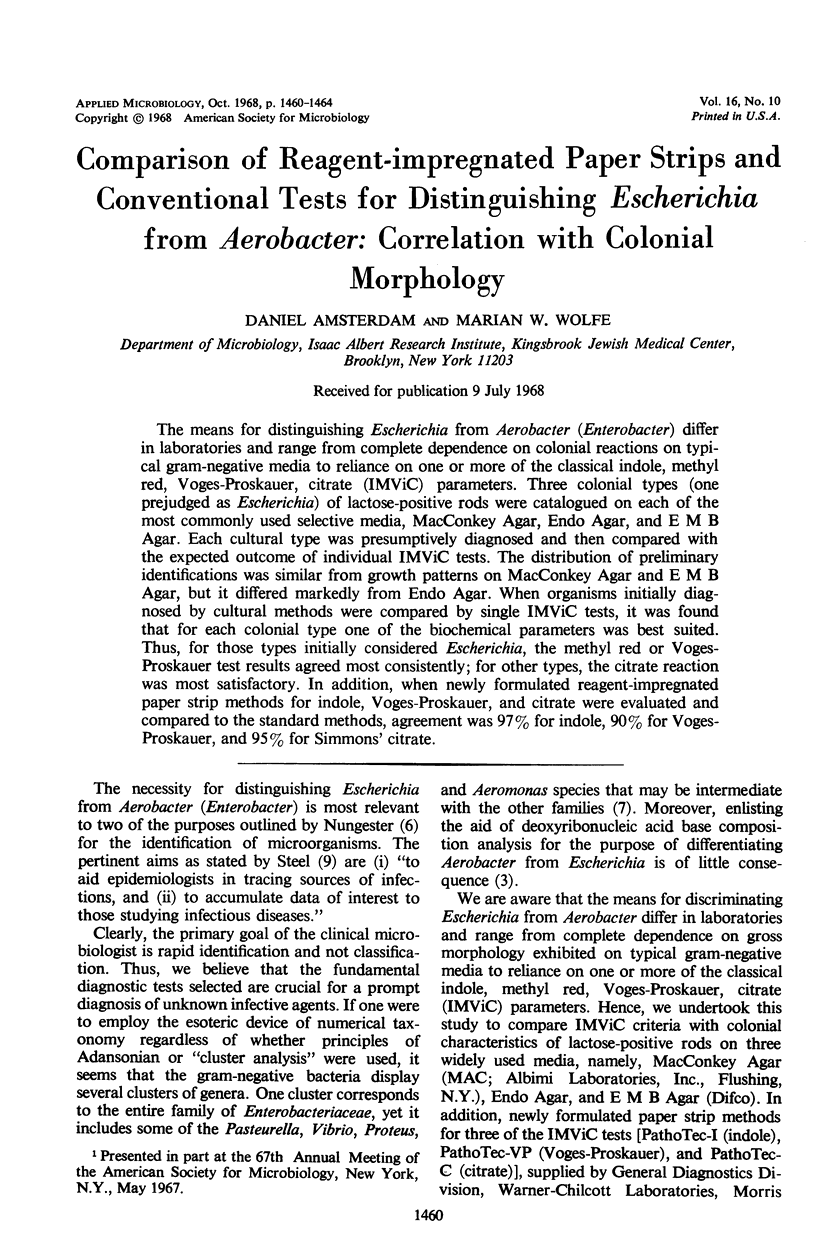
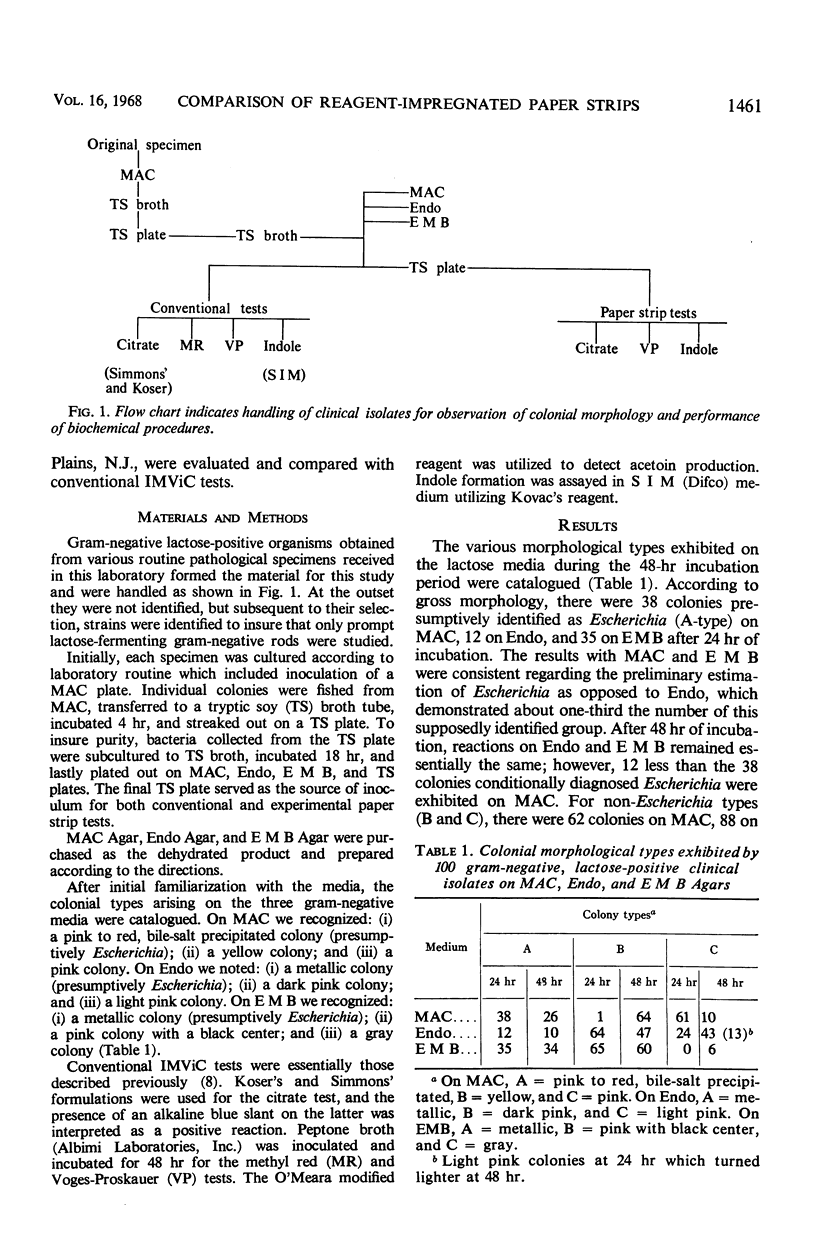
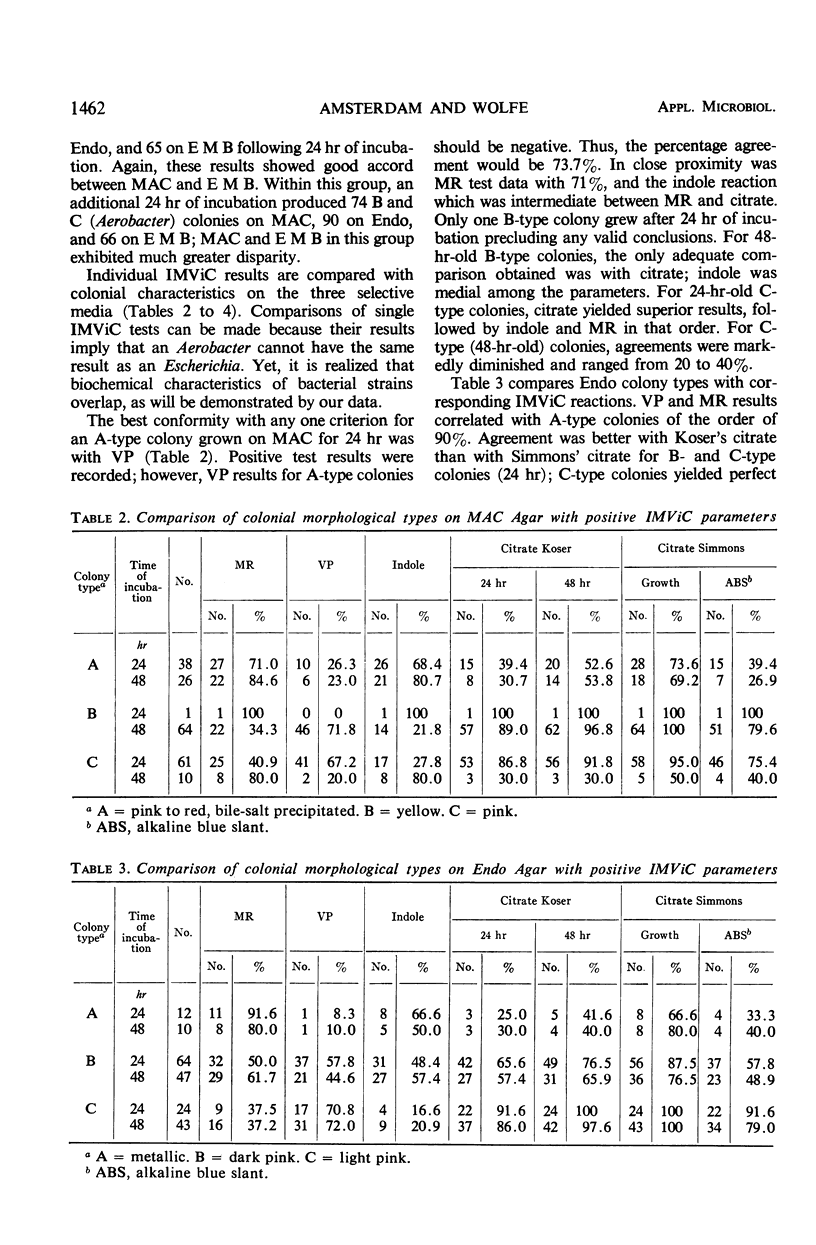
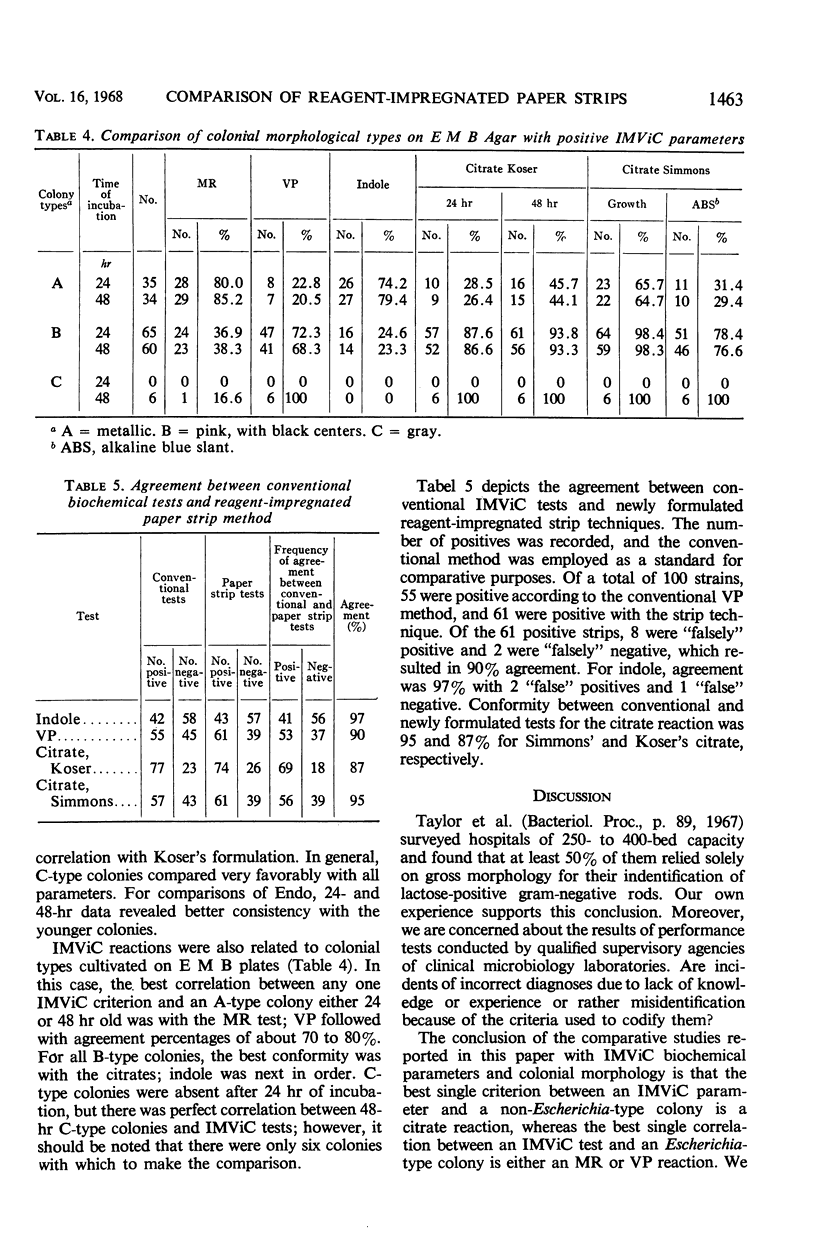
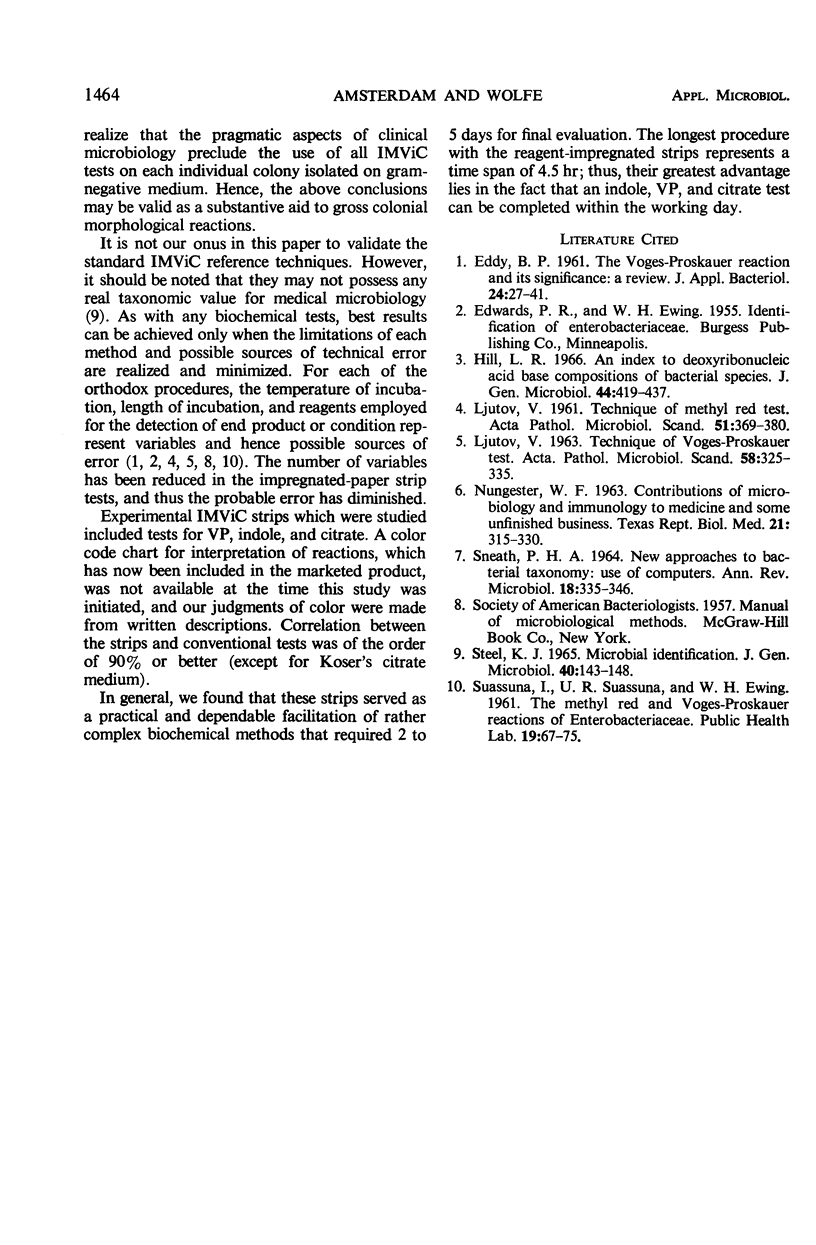
Selected References
These references are in PubMed. This may not be the complete list of references from this article.
- EDDY B. P. The Voges-Proskauer reaction and its significance: a review. J Appl Bacteriol. 1961 Apr;24:27–41. doi: 10.1111/j.1365-2672.1961.tb00230.x. [DOI] [PubMed] [Google Scholar]
- Hill L. R. An index to deoxyribonucleic acid base compositions of bacterial species. J Gen Microbiol. 1966 Sep;44(3):419–437. doi: 10.1099/00221287-44-3-419. [DOI] [PubMed] [Google Scholar]
- LJUTOV V. TECHNIQUE OF VOGES-PROSKAUER TEST. Acta Pathol Microbiol Scand. 1963;58:325–335. doi: 10.1111/j.1699-0463.1963.tb01578.x. [DOI] [PubMed] [Google Scholar]
- LJUTOV V. Technique of methyl red test. Acta Pathol Microbiol Scand. 1961;51:369–380. doi: 10.1111/j.1699-0463.1961.tb00375.x. [DOI] [PubMed] [Google Scholar]
- NUNGESTER W. J. CONTRIBUTIONS OF MICROBIOLOGY AND IMMUNOLOGY TO MEDICINE AND SOME UNFINISHED BUSINESS. Tex Rep Biol Med. 1963;21:315–330. [PubMed] [Google Scholar]
- SNEATH P. H. NEW APPROACHES TO BACTERIAL TAXONOMY: USE OF COMPUTERS. Annu Rev Microbiol. 1964;18:335–346. doi: 10.1146/annurev.mi.18.100164.002003. [DOI] [PubMed] [Google Scholar]
- Steel K. J. Microbial identification. J Gen Microbiol. 1965 Jul;40(1):143–148. doi: 10.1099/00221287-40-1-143. [DOI] [PubMed] [Google Scholar]


